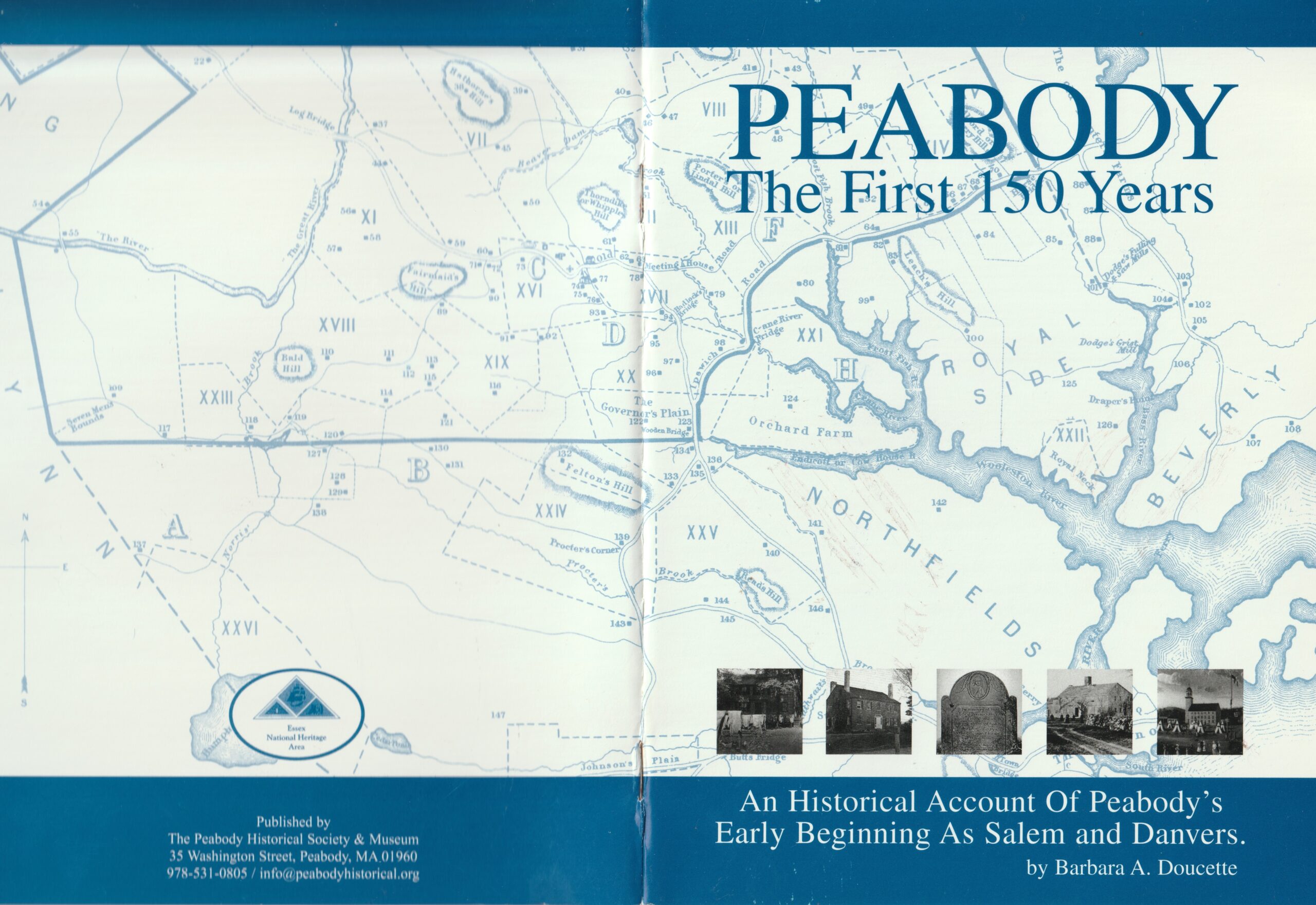Early Settlement
The settlement by the English of the area known today as Peabody began when the Massachusetts Bay Company established the Town of Salem in 1629. As the population of Salem grew, emigrants began to settle to the north and west of the immediate coastal area. These outlying areas of Salem were referred to as Northfields, The Farms or Brooksby, and would, through a series of mergers and name changes, evolve into what is today the City of Peabody.
In the 17th century Peabody was largely wilderness, with many meadows, large hills, swamps and pastures and an extensive network of rivers and streams. The majority of the early settlers were farmers, but Peabody was also a center of industry. The first industrial venture began prior to 1635 when Captain William Trask established a grist mill at the head of the North River, the location of present day Peabody Square. In 1670, Joseph Pope opened the first saw mill, and in 1685 Jeremiah Meacham, a clothier, built a fulling mill for the preparation and processing of cloth. A glasshouse opened in the Aborn Street area in 1638, possibly the first of its kind in America. The leather industry, for which Peabody became famous, began as early as 1639, when Philemon Dickerson was granted land for tan pits and the dressing of hides.
Interested in reading more? Click this link to the full text of Peabody: The First 150 Years by Barbara A. Doucette.

Witchcraft Trials
Martha Corey, also a resident of Brooksby, was a vocal opponent of the trials. Probably because of her opposition, she was accused of witchcraft, found guilty and hanged. Giles Corey, her husband, was subsequently accused and found guilty, but instead of being hanged, he was pressed to death. Corey owned 150 acres of land in the area of Phelps Pond, and he knew that an admission of guilt was grounds for forfeiture of his property, which he wished to leave to his sons. When Corey proved to be obstinate in his refusal to “admit” his guilt, the Sheriff of Salem ordered a board to be placed on his chest and large stones set on top of it. Corey repeatedly baited his torturers with the demand “More weight” until he finally expired.
Pottery Industry
By 1775, seventy-five potteries were operating in the two towns of Danvers and Peabody. During the first half of the nineteenth century, demand for redware decreased because of an increase in the availability cheap imports. By 1855, only two potteries remained in Peabody. One was owned by Joseph Reed, who had purchased a pottery on Central Street from the Osborn family. In 1876, Reed sold the pottery to Moses B. Paige. Paige Pottery was the last establishment in Peabody to manufacture redware. Paige Pottery remained in operation until the 1950s when it was destroyed by fire.
Leather Industry
Peabody Today
But Peabody’s main resource continues to be its people. Every September the city celebrates the diversity of its heritage with the annual International Festival in Peabody Square, where thirty-six nationalities and cultures are represented through exhibits, art, and cuisine. In 2012 we were among the 100 Best Cities to Live by Money Magazine and in April 2009, Forbes Magazine listed the City of Peabody as Number 14 on its list of most livable cities in America, signifying that Peabody remains a vibrant and flourishing community.
Important People in Peabody History
George Peabody
Many of Peabody’s foundations still exist today and continue to serve as modern philanthropic models. In America, he funded and supported the Peabody Institutes in Peabody and Danvers, Massachusetts and in Baltimore, Maryland; the Peabody Museums at Harvard, Yale and in Salem, Massachusetts; and the George Peabody College for Teachers, in Nashville, Tennessee. In England, he established the Peabody Donation Fund, which is today London’s largest non-profit housing foundation, providing homes to 40,000 low-income people. When Peabody died in 1869, he became the first American to be given a funeral service in Westminster Abbey. His last wish, however, was to be buried in his hometown of South Danvers. The funeral train from Maine, where his body arrived from England via the H.M.S. Monarch, to South Danvers, was the longest procession in U.S. history, surpassing that of Abraham Lincoln. Peabody was laid to rest with great ceremony during a blizzard at Harmony Grove Cemetery in Peabody. Today the George Peabody House is maintained as a museum by the City of Peabody.
